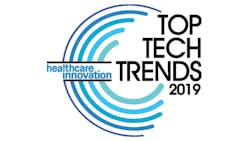If electronic health record (EHR) implementation was Assignment No. 1 for chief medical information officers, EHR optimization is clearly Assignment No. 2. (No. 3 might be digitizing patient engagement and other aspects of provider experience). With physician burnout such a pressing problem and with clinicians focusing their ire directly on the EHR as a culprit, health systems are devoting considerable resources to EHR optimization efforts. But first they have to figure out what to optimize and how.
Efforts at the Children’s Hospital of Philadelphia (CHOP) provide a case study. An organizational physician wellness group surveyed CHOP physicians and found that 33 percent felt some amount of burnout, and processes around the EHR was No. 1 on their list of reasons. “It was quite clear that the EHR was the biggest culprit,” says Eli Lourie, M.D., CHOP’s associate chief health information officer for ambulatory medicine, who adds that the hospital and others like it have inadvertently created an environment for burnout. CHOP began gradually implementing Epic in departments as long ago as 2001 but never did a good job of circling back to fine-tune usage and make sure people were aware of new tools being introduced in upgrades. “There was a huge focus on implementation and little focus on continuous improvement,” he says, adding that the rush for Meaningful Use dollars made that the case in lots of healthcare settings.
Because of the burnout the survey highlighted, two years ago Lourie was given a team of seven full-time staffers to work on EHR retraining efforts in the ambulatory space. “We didn’t know the best way to go into a clinic or division and do optimization,” he admits. Through observation, they found that every single user had some type of deficiency in knowledge of Epic functions. They tried classroom training. “I taught it and it was terrible —like middle school,” he says with a laugh. “Four people in front paying attention, five in back doing Facebook, and the other 10 got lost.” They shifted gears and tried one-on-one retraining with a skills checklist to make sure every provider has at least one hour with a trainer outside a clinic to teach them basic Epic skills, and offering more time if they want it.
The No. 1 thing that surprised the team was that physicians were not using an Epic tool called chart search that pulls up every reference to a word you are searching for. “It is a great tool,” Lourie says, “and 85 percent of the people in our organization did not know it was there.” In Epic there also are personalization tools for ordering, documentation and in-basket functions that many people hadn’t taken advantage of.
Lourie says the one-on-one training has increased goodwill and decreased the feeling of isolation that some providers felt. “People are more willing to open themselves to learning new efficiency tricks and putting them into their work flow,” he adds. Surveys following the retraining efforts have shown big jumps in perceived efficiency in the EHR and statistically significant changes in reports of burnout.
Getting PhIT
Another pediatric health system, Nemours Children’s Health System, has addressed physician burnout by creating a program to give some physicians special training in informatics and an opportunity to work with their colleagues on EHR optimization.
Nemours has children’s hospitals in Wilmington, Del., and Orlando, Fla. At Healthcare Innovation’s Mid-Atlantic Health IT Summit on June 3, its executive team described the creation of a program called Physician IT (PhIT) to enlist physicians with an aptitude for creating efficiencies and working with their colleagues. Sara Slovin, M.D., a primary care physician in the Department of Pediatrics, who went through the PhIT program, said solutions have to be custom-designed to meet the individual physician’s needs. “First we meet with them to identify what they are struggling with,” she said. For some it is that documenting is taking too long and they are typing notes late at night. They may want to try Dragon Dictation or using a scribe or more macro tools. “It is so valuable to see the ah-hah moment,” she says. Making documentation easier can change their experience of work. “Our goal is not to change work flow completely,” she adds, “but to enhance it and make them feel better.”
David West, M.D., Nemours medical director of health informatics, describes the attributes he looks for in potential candidates for PhIT. The first two he mentions are a comfort in working with data, and people who like to work with applications and create things themselves. “The third is creating relationships with colleagues on a plane you are not used to,” he says. “You are coaching. You need to be good at establishing relationships with individuals and groups so that they have a feeling of having more control over their experience. The issue about engagement is partly about how much I can control what is happening to me and make the experience better.”
A swing coach for EHR use
Earlier this year, Healthcare Innovation highlighted the efforts of Allina Health in Minnesota, which is particularly aggressive in its efforts to help clinicians get the most out of the EHR. “We have a philosophy of keeping things simple and keeping the computer out of the way of that provider/patient interaction,” says David Ingham, M.D., medical director of ambulatory services. Since early 2018, Allina informaticists have been creating dashboards that take provider efficiency profile (PEP) data from Epic and present it in a much more usable format.
Ingham uses a metaphor of a coach helping a golfer improve his or her swing to describe what his team is doing. “We really do use it in a coaching fashion, at least as a jumping-off point,” he says. Allina’s performance support trainers are the front line for ongoing training. It used to be if they have 10 minutes with a provider, they might spend eight of the 10 minutes figuring out what they needed help with. “But if they have data on provider tendencies,” he explained, “it allows them to focus on trouble spots and not on the things they are already good at.”
Informatics researchers study EHR data
People in the trenches working with clinicians every day are not the only ones trying to improve EHR efficiency. Informatics researchers are studying human-centered design approaches to making it easier for clinicians to locate pertinent data and analyzing audit logs to suggest improvements in clinic work flow to reduce provider stress and patient wait times.
Shyam Visweswaran, M.D., Ph.D., associate professor of biomedical informatics at the University of Pittsburgh, is working on developing “learning electronic medical records.” He notes that while data entry is cumbersome in EHRs, the problem he is working on is data retrieval. “The ICU and emergency department are very data-rich environments,” he says. “Quite a lot of data flows in. Over a 24-hour period you could have over 1,400 pieces of data flowing into the EHR. Clinicians are sometimes missing important points due to information overload. Can we do something smart to help with that overload?”
His idea is to use machine learning to identify relevant EHR data to highlight for a given patient and clinical context. The system does this by analyzing patterns of patient data access in past patients in the EHR and building machine learning models to predict which data to highlight. Then it can identify for a particular type of diagnosis what kind of data is most important to a clinician and highlight it in some way, he explains. “We could collect all the important data and put it in one place, or show everything, but highlight important ones in place. We are testing which physicians prefer.”
His research has had clinicians simulate looking at data on a particular patient using a prototype EHR his office built. “The clinicians tell us the important information that they looked at. That is how we built the models,” Visweswaran says. His research has also used an eye-tracking system to gather information on which patient data they are looking at. His next project is to test it out with a real EHR in a clinical setting.
Michelle Hribar, Ph.D., assistant professor of medical informatics and clinical epidemiology at Oregon Health & Science University’s School of Medicine, is using EHR data to improve clinic workflows at OHSU’s Casey Eye Institute and is starting to work on how that secondary use of EHR data could improve clinician efficiency and satisfaction in the EHR.
Her team has used EHR audit log and time stamp information to study bottlenecks in patient scheduling and recommend changes—basically scheduling from shortest estimated visit to longest to reduce patient wait times. “We used time stamps to test it and to measure the improvement,” she says. “We also used them as one of the features in a machine learning model to predict how much time a patient is going to take, based on average exam time for that patient in the past.”
The work on clinician satisfaction with EHR usage is in an earlier phase, she notes. “Using audit logs, we have measured how much time they are spending in the EHR both during an exam and after the exam,” Hribar says. “We are looking to see how many previous notes they are reviewing during the course of an outpatient exam and how their notes are being composed.” They are predominately being composed by templates, she says, adding that looking back over 10 years of Epic use, the length of the average note has increased by 150 percent. “At this point, we are trying to figure out the best approach to help physicians,” she says, including studying the impact of scribes.
Perhaps scribes and voice technology can relieve physicians from doing too much data entry. Speaking at Thomas Jefferson University in Philadelphia on May 9, Epic Systems CEO Judy Faulkner predicted that five years from now ambient voicer offerings from EHR vendors such as Epic will start to enter the work flow.
“In the exam room, you could be talking with a patient and the microphones in the room will pick up what you’re saying and placing the orders for you, putting the diagnosis in for you and basically doing your charting for you,” Faulkner said. “Those of you who use Alexa and Siri know that they don’t always get it right. Five years from now we will be a lot further along with that.”
CHOP’s Lourie says he has been impressed by some of Epic’s work on this front, but he is less sure about the five-year timeline. “I would love to see that in five years, but I think it is more likely in 10 to 15,” he says. “Voice activation requires a lot of sophistication to get it into the work flow. What I find is happening at a more rapid pace, though perhaps less sexy, is the machine learning and AI capabilities of EHRs and databases that underlie them to do more precision medicine and to help you understand who this person is in front of you and to anticipate your needs. I see that happening quicker. That is going to be five years easy.”



